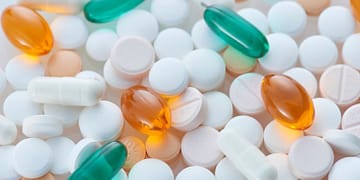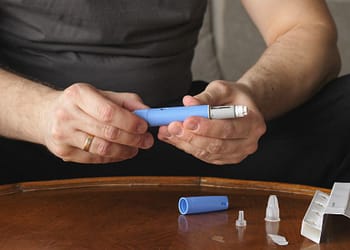- Kounis syndrome: the acute coronary syndrome that fuses cardiology and allergies - January 7, 2025
- Physical exercise as a cause of Anaphylaxis - December 9, 2024
- Postpartum Mastitis: What is it and what to do? - December 3, 2024
Described in 1991 by Kounis and Zavras as an allergic angina syndrome that could lead to myocardial infarction secondary to an allergic reaction to penicillin.
Later, different causes were discovered: other antibiotics, metamizole, non-steroidal anti-inflammatory drugs, corticosteroids, general anesthetics, radiological contrasts, proton pump inhibitors, thrombolytics, anticoagulants, foods, hymenoptera stings, mastocytosis, stents intracoronary active drug, etc.
In short, Kounis syndrome It is an acute coronary syndrome (ACS) that includes: coronary spasm, acute myocardial infarction and/or stent thrombosis, associated with the activation of mast cells and platelets in anaphylactic or anaphylactoid episodes.
Mast cell degranulation with the release of multiple vasoactive mediators into the systemic circulation. For example, histamine and leukotrienes, potent coronary vasoconstrictors, and tryptase and chymase, which induce erosion or rupture of the atheromatous plaque, constitute the pathophysiological mechanism involved in the coronary event.
Classification
Type I (most common 72%) without previous coronary disease: due to a coronary spasm that produces electrocardiographic changes secondary to ischemia, cardiac enzymes may be normal or reflect progression to an acute myocardial infarction.
Type II with previous coronary disease: erosion or rupture of the atheromatous plaque, causing an acute myocardial infarction.
Type III patients with thrombosis of the stents drug-active.
Ibuprofen diagnosis It is eminently clinical and suspicious.
An acute allergic reaction associated with SCA should make us think of a Kounis syndrome (KS).
Diagnostic tests
– Electrocardiogram and determination of cardiac enzymes: ST segment elevation, although it may be normal or nonspecific; elevation of cardiac enzymes, which may also be normal,
- Determination of plasma tryptase or histamine. Elevated serum tryptase is a marker of mast cell activity and when elevated supports the diagnosis of hypersensitivity reaction. It is the most useful test for diagnostic support. Histamine only has a half-life of 60 minutes, with a maximum peak at 5-10 minutes after the start of the reaction. Tryptase reaches its maximum peak at 90 minutes after the start of the reaction and remains elevated in the blood for between 6 and 9 hours.
Treatment
The treatment of this entity is complex. Drugs to treat allergic reactions may aggravate cardiac symptoms (adrenaline, which is the drug of choice in anaphylaxis, can cause cardiac arrhythmias, vasoconstriction and prolong ischemia), and drugs used for ACS can worsen the allergic condition. Therefore, it is necessary to select and use drugs carefully in order to avoid further release of mediators or exacerbation of coronary vasospasm.
SK treatment requires elimination of the causative allergen and treatment of coronary alteration, depending on the type and treatment of the allergic condition.
As a general rule, hemodynamic stabilization, oxygen therapy, use of corticosteroids, anti-H1 and H2 antihistamines, and non-dihydropyridine calcium antagonists are recommended, which may be a good alternative to beta-blockers in anti-ischemic therapy.
Aspirin may aggravate the allergic reaction by producing an increase in leukotrienes. Its use is not approved in SK.
Nitrates may aggravate hypotension and tachycardia. Safe as long as the patient is not hypotensive.
Morphine may cause mast cell degranulation and aggravate anaphylaxis. Fentanyl and its derivatives, which are less histamine-releasing, are preferable.
Beta-blockers may aggravate vasospasm and bronchospasm.
In Kounis syndrome, allergic and coronary alterations are combined, so once the acute event has been resolved, these patients should be referred for specialized studies in Cardiology and Allergology.
Finally, this is an entity in which the emergency physician must have a high index of suspicion for proper diagnosis and treatment.






